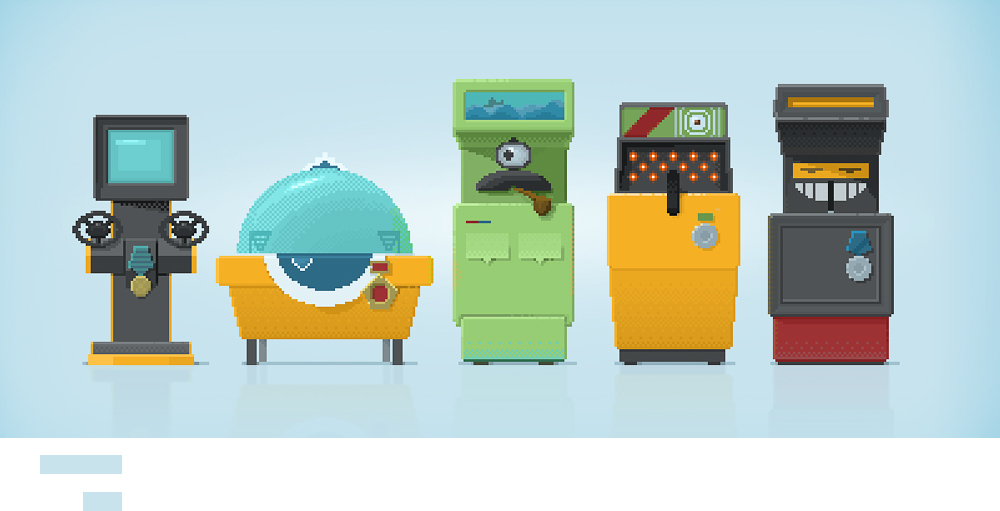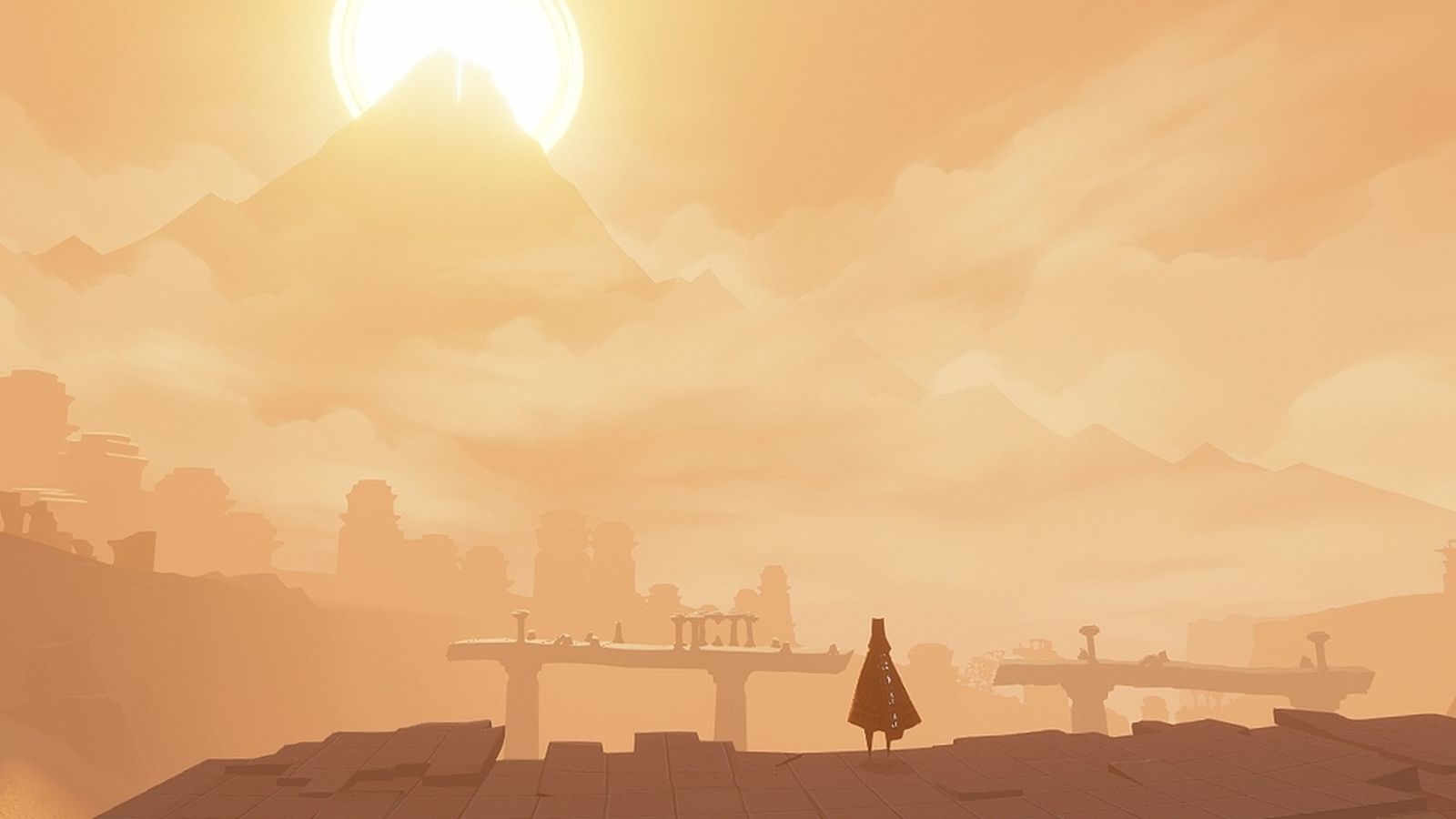Minimalism in game design: examples, tips and ideas. Part two
We, game developers, are always busy solving some problem. Of course, the shortest path between two points is a straight line. And minimalism often plays the role of this straight when creating a game. If the task is too complex, start with a simple solution and use it as a starting point. So you allow yourself to focus on more important aspects of the gameplay.
When the game uses a minimum of graphics, sound and mechanics, you can allow yourself to gradually add more elements while maintaining the original balance.

')
The first part of the material - the link.
It is clear that the visual style of your game is very important. Most likely, a potential player will judge it by a single screenshot. Therefore, it is very important to make the essence of the game clear at first glance. And in this case, minimalism, by virtue of its abstractness, can both help and harm, so be careful.
Below are some ideas for thinking about how to use minimalism in the design of your game:

Try to reduce the interaction of players with your game to a minimum. An overly complex management system will disappoint and scare them away. The learning curve should not be steep, always strive for simplicity and elegance. Game mechanics should also be clear at first glance. Here are some tips for gameplay design:

You, as a narrative designer, have to direct and control the development of the storyline of the game. Depending on the type of plot, minimalism may or may not be useful technique for you. Minimalistic narrative design implies that a significant part of the narration is implicit: at the expense of the gameplay mechanic, graphic design, level design and other methods that are in the possession of the scriptwriter. Narrative designers are responsible for ensuring that all elements of the game look like part of one picture, one story. This requires them to have a deep understanding of many aspects of the game development process.
So, a few recommendations in terms of narrative design:

Minimalism in game design is a very deep, complex and ever-expanding theme. The next time you play a game, think about how you would make it more or less difficult. Examine the graphics and layout and think about how to simplify individual elements while maintaining their original form. Pay attention to the spaces and empty areas. Listen to the silence between the important moments of the game. Do not focus on the obvious; look at things that have been minimized.
Games are very complex in nature, and sometimes you want to plunge into the depths of some of them in search of the right solution. But, as in life, sometimes the right decisions can be very simple.
When the game uses a minimum of graphics, sound and mechanics, you can allow yourself to gradually add more elements while maintaining the original balance.

')
The first part of the material - the link.
Decoration
It is clear that the visual style of your game is very important. Most likely, a potential player will judge it by a single screenshot. Therefore, it is very important to make the essence of the game clear at first glance. And in this case, minimalism, by virtue of its abstractness, can both help and harm, so be careful.
Below are some ideas for thinking about how to use minimalism in the design of your game:
- Work with a limited palette of carefully selected colors. Colors can represent emotions, mood, temperature, place, character, and more. Consistency and taste are much more important when choosing colors than the simple use of a strictly fixed palette.
- Contrast is your friend. In the conditions of a limited set of visual tools, the game in contrast is no less important than the availability of these tools. With a small number of elements on the screen, strive to draw a void between them to your advantage.
- Use simple and recognizable forms. If you are not familiar with the subtleties of art and design, first of all learn to work with silhouettes. Take the most detailed element of the scene and leave only one color in it. Then ask yourself: is the former element in this silhouette guessed? Working with a limited number of colors, you can create recognizable scenes that will remain familiar even after you add details.
- Lighting is more important than the number of polygons. A low-poly scene with high-quality lighting will also look spectacular.
- Use light or colors instead of auxiliary indicators, maps and markers to indicate the direction of the player.
- Try to integrate the indicators into the gaming environment as seamlessly as possible. For example, place an indicator of the number of rounds in the form of a screen directly on the weapon itself. Or make an inventory system that would exist in the physical space - inside the user's backpack - and not just in the menu on the screen.
- High-quality animation of a weakly detailed character looks much better than a bad photorealistic animation.
- To indicate the time, it is better to choose a properly adjusted lighting, rather than a clock on the screen.
- Use damage models or other unique contextual solutions instead of health indicators. For example, a slow walk of an opponent may indicate a slow walk or a limp.
- Use animated GIFs to promote your minimalist game if the screenshots do not convey its essence.

System design
Try to reduce the interaction of players with your game to a minimum. An overly complex management system will disappoint and scare them away. The learning curve should not be steep, always strive for simplicity and elegance. Game mechanics should also be clear at first glance. Here are some tips for gameplay design:
- Always give preference to something familiar, and not unique. It sounds extremely inefficient for anyone who seeks to invent something new, but this is true. If you create something that intersects in any way with already existing things, players will become more comfortable with the game. Do not reinvent the wheel for someone who already knows how to pedal.
- Use a simple context-dependent control system instead of a complex and extensive one. If your player can open chests and doors, then both actions must be performed with one button. It remains only to ensure that the doors and chests do not come across nearby.
- Speaking of a context-sensitive system, the same button can be pressed in several different ways: single pressing, double pressing, holding and pressing or a series of rhythmic pressing. You may want to take advantage of all the capabilities of the controller, but try to find a way to limit the number of buttons pressed to the strictly necessary.
- Use in the construction of puzzles and tests the possibility of rhythm and synchronicity. Players quickly perceive similar gameplay patterns, without needing additional instructions and explanations.
- Force players who have discovered a new ability to practice and experiment with it independently. There is no need for descriptions and training lessons, simply force the player to apply a new ability to solve an immediate problem. Then you will need to ensure that this ability remains relevant throughout the game, otherwise it will simply be forgotten.
- Give your players a reason not to press a button. If a fierce firing in the corridor seems to be the best solution for one situation, the absence of shooting can be a good solution for another. Instead of constantly adding new mechanics, consider temporarily removing existing ones. Perhaps this will bring your players new sensations.
- No overkill. As a rule, the abundance of options is good, but make sure that the most preferred option does not negate the relevance of some other options. For example, if there is a jetpack in the game, bonuses in the form of double jumps or a climbing hook will automatically become unnecessary. When one solution obviously surpasses all other options, the latter invariably turn into overkill. If you have a lot of options in the game, make sure that each of them gives a unique and valuable bonus.

Narrative design
You, as a narrative designer, have to direct and control the development of the storyline of the game. Depending on the type of plot, minimalism may or may not be useful technique for you. Minimalistic narrative design implies that a significant part of the narration is implicit: at the expense of the gameplay mechanic, graphic design, level design and other methods that are in the possession of the scriptwriter. Narrative designers are responsible for ensuring that all elements of the game look like part of one picture, one story. This requires them to have a deep understanding of many aspects of the game development process.
So, a few recommendations in terms of narrative design:
- Avoid long introductions. Instead of starting the game with voice-over, video saver or captions, immediately transfer to the player active control. Set the scene not with words, but with mood and atmosphere. Let the new characters tell their actions, not biographies.
- More research, less explanation. Do not overwhelm players with tons of text with a background and practical advice; it’s better to reward them for their independent research of the game world.
- Avoid additional collection items that explain important points from the history of your game world. Find a way to express this information through gameplay, and not, say, audio inserts.
- Silence can be no less informative than a full-fledged dialogue. If possible, use body language and facial expressions to convey emotions.
- Make the player ask questions and don't be afraid to leave them unanswered. A game, any aspect of which is open to knowledge and exploration, will always have limited depth. Secrets and riddles, beyond the control of the study, will long remain in the memory of the players, even after the game ends.
- A very simple plot can be compensated by highlighting the complex process of improving the player. Remember: minimalism can be used to create a contrast between two elements to cause the player to have a false sense of depth.

Conclusion
Minimalism in game design is a very deep, complex and ever-expanding theme. The next time you play a game, think about how you would make it more or less difficult. Examine the graphics and layout and think about how to simplify individual elements while maintaining their original form. Pay attention to the spaces and empty areas. Listen to the silence between the important moments of the game. Do not focus on the obvious; look at things that have been minimized.
Games are very complex in nature, and sometimes you want to plunge into the depths of some of them in search of the right solution. But, as in life, sometimes the right decisions can be very simple.
Source: https://habr.com/ru/post/322842/
All Articles